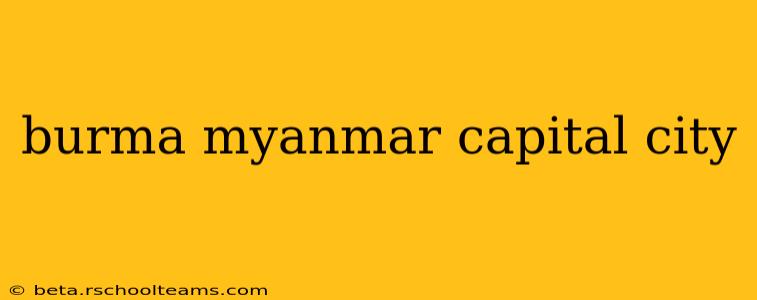For years, the question "What is the capital of Myanmar?" has yielded a complex answer, steeped in history and political shifts. While many still associate Yangon (formerly Rangoon) with Myanmar's cultural heart, the official capital city is Naypyidaw. This relatively young capital holds a fascinating story, one that intertwines modern planning with ancient traditions. This exploration delves into the history, development, and unique character of Naypyidaw, offering a deeper understanding of Myanmar's administrative center.
From Yangon to Naypyidaw: A Capital's Relocation
The move from Yangon, Myanmar's historic capital and vibrant commercial hub, to Naypyidaw in 2005 was a significant event. While the official reasons cited by the military government focused on decentralization and easing congestion in Yangon, the relocation also served strategic and political purposes. The new capital, designed on a grand scale, reflected a desire to project an image of a modern and powerful nation.
The transition wasn't seamless. Many residents and businesses were relocated, causing disruptions and uncertainties. Yangon, despite losing its official capital status, retains its cultural significance and remains Myanmar's largest city, a bustling center of commerce and cultural activity.
Naypyidaw: A City of Vast Spaces and Contrasts
Naypyidaw's most striking characteristic is its sheer size. Spread over an expansive area, it's one of the world's largest cities by area. This vastness contributes to a feeling of spaciousness but also underscores its relatively low population density. Unlike the bustling energy of Yangon, Naypyidaw maintains a calmer, more planned atmosphere.
The city's layout is remarkably organized, reflecting its modern planning. Wide, empty boulevards and meticulously landscaped areas contrast with the more densely populated areas where government buildings and residential zones are located. This juxtaposition of expansive spaces and concentrated development creates a unique urban landscape.
Exploring the Key Landmarks of Naypyidaw
While less steeped in historical landmarks compared to Yangon, Naypyidaw boasts several notable attractions:
- The Uppatasanti Pagoda: A stunning golden pagoda, inspired by the Shwedagon Pagoda in Yangon, serves as a prominent religious landmark and symbol of peace.
- The National Museum: Showcases Myanmar's rich history and cultural heritage.
- The Presidential Palace: A grand structure representing the seat of government.
- Government Ministries and Buildings: Impressively designed and spaced, forming a key part of the city's modern architecture.
These sites reflect a blend of traditional architectural influences and modern design, showcasing the nation's heritage alongside its aspirations for progress.
Naypyidaw: Beyond the Official Narrative
Understanding Naypyidaw requires moving beyond the official narrative. While the city presents a picture of modern planning and development, the realities of its rapid growth and the social implications of its creation need consideration. The city's low population density and vast, empty spaces can also be seen as a reflection of its political context and the government's vision for the country.
Further research into the lived experiences of Naypyidaw's residents, the economic impact of its creation, and its evolving role within Myanmar's broader development is crucial for gaining a holistic understanding of this unique city.
Conclusion: A City in Transition
Naypyidaw's story is still unfolding. As Myanmar navigates its political and social transitions, the city's role and development will continue to evolve. While it may lack the historical charm and vibrant energy of Yangon, Naypyidaw's unique characteristics provide a valuable window into modern Myanmar and its aspirations for the future. Its grand scale and planned layout stand as a testament to the country's ambitions, even amidst ongoing challenges and uncertainties. Understanding Naypyidaw is crucial to understanding the complexities of modern Myanmar.
